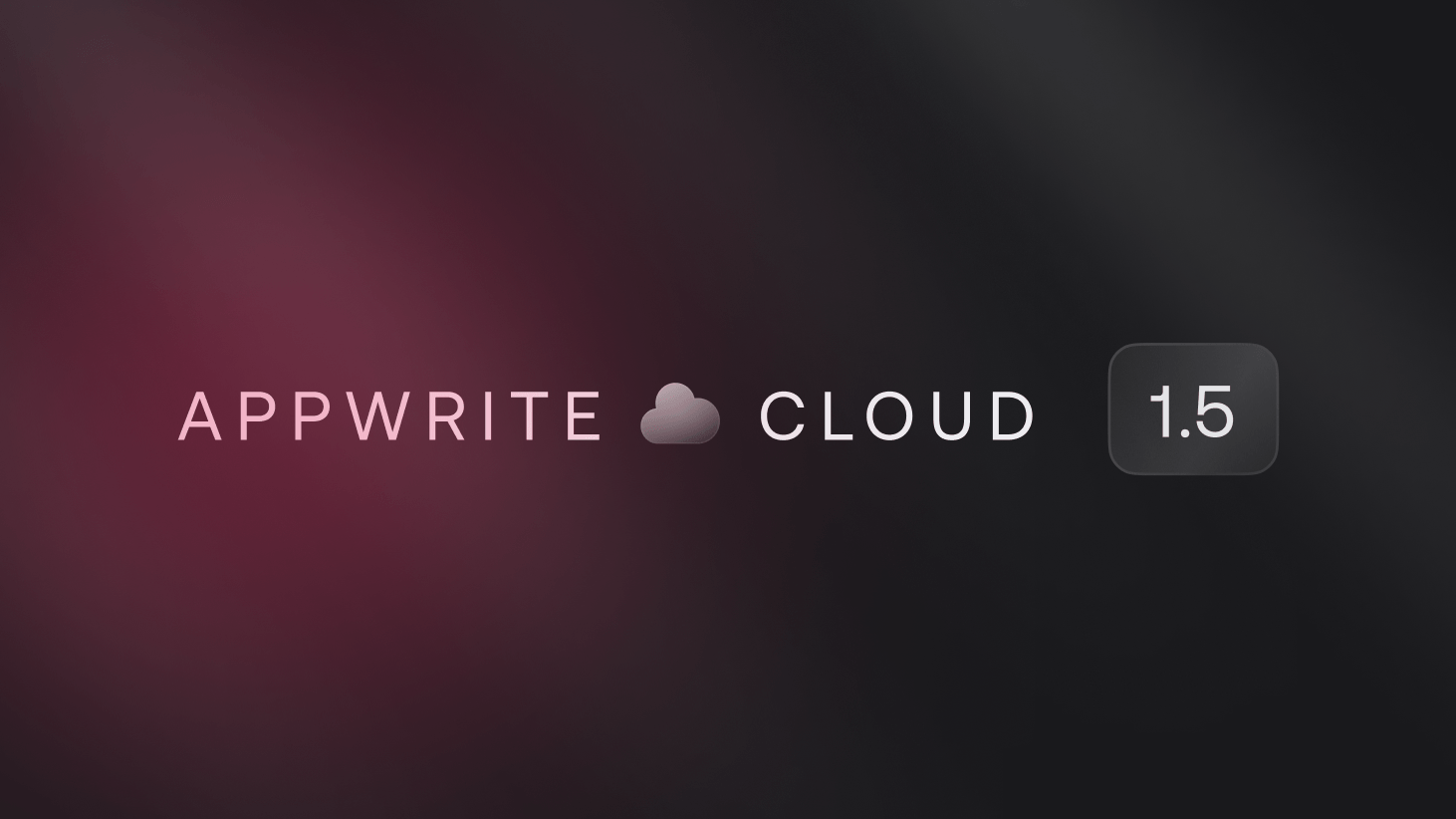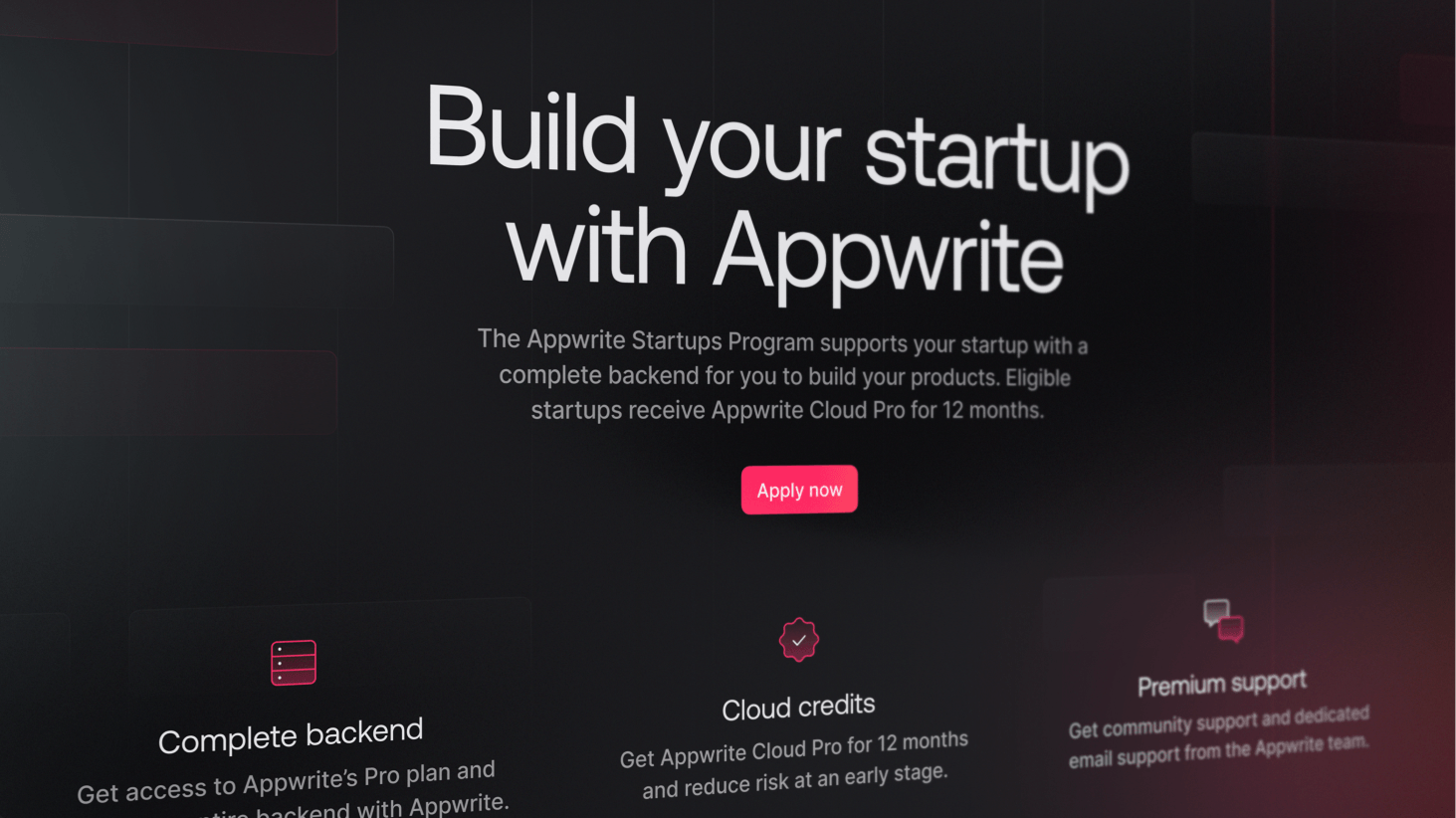Last week, we saw the culmination of a whole new initiative, the celebration of everything new with Appwrite and the community, called Init. From February 26th to March 1st, we celebrated a new product and/or feature every day and shared educational content around the same. Alongside, we hosted online events each day in the Appwrite Discord server with creators and friends of Appwrite to learn about the new releases, ask questions, and, most of all, geek out together.
One popular aspect of these events was a random giveaway that we ran every single day, giving out Init swag to a number of our community members. When planning out these giveaways, however, we wanted to create a high-quality experience for our community members, to make it as special and exciting as every other aspect of Init.
Therefore, using Discord OAuth and Databases in Appwrite, we built our very own “Spin The Wheel” giveaway roulette application!
What the app does
The giveaway app has two major features:
Giveaway registration
The giveaway registration requires users to log in to the app with their Discord account. As soon as a user logs in with Discord, the app adds their Discord username and email address to an Appwrite collection.

Winner selection
The data added to the Appwrite collection is loaded in a wheel that is also updated in real time in case new registrations are added. The wheel can then be spun like a roulette wheel to find a randomly selected winner.

How we built it
To discuss how the app was built, we’ll discuss the part of setting up Appwrite and implementing the code as two separate parts.
Setting up Appwrite
To build this application, we used the Discord OAuth adapter in Appwrite Auth and Appwrite Databases. The only prerequisite here was creating an Appwrite Cloud account, followed by creating a new project and adding your hostname as a web app to the project.
Discord OAuth
Implementing Discord OAuth required us to first set up an application on the Discord Developer Portal. After creating an application, we visited the OAuth2 tab within the application to get the client ID and secret to set up the Discord OAuth adapter in our Appwrite project. We also copied to redirect URI to add it to our Discord Developer App.

Appwrite Database
We created a database and a collection for each day of the giveaway in our Appwrite project. Each collection had the same steps to set up.
Each collection contained two attributes:
| Key | Type | Size | Required |
| discordName | String | 255 | Yes |
| - | Yes |
To ensure that one user could only be added once for a day’s giveaway, we created an index of the unique type.
| Key | Type | Attribute | Order |
| names | unique | discordName | ASC |
Lastly, we added collection-level permissions to allow anyone to read data (since the giveaway page was meant to be publicly accessible) and only authenticated users to add data (their Discord username and email address) to the collection.
| Role | Create | Read | Update | Delete |
| Any | Yes | |||
| Users | Yes |
Setting up the app
Looking at the two primary features, there were three primary challenges we needed to solve to develop this app. To build this app, we used SvelteKit, a framework to build web applications using JavaScript. There are some prerequisites, however, that must be completed before building out the features themselves.
Note: The code snippets will focus only on the application logic. All CSS and styling-related information will be accessible in the final project repository at the end of the blog.
Prerequisites
We first set up a skeleton SvelteKit project.
npm create svelte@latest init-giveaway-roulette
We then entered the application directory, installed the Appwrite Web SDK and Pink Design using npm install appwrite "@appwrite.io/pink", and set up our constants.
// ./src/lib/constants.js
export const APPWRITE_ENDPOINT = 'https://cloud.appwrite.io/v1';
export const APPWRITE_PROJECT = '<PROJECT_ID>';
export const DATABASE_NAME = '<DATABASE_ID>';
export const COLLECTION_NAME = '<COLLECTION_ID>';
After the constants were added, we could now set up the Appwrite SDK.
// ./src/lib/appwrite.js
import { Account, Client, Databases } from 'appwrite';
import { APPWRITE_ENDPOINT, APPWRITE_PROJECT } from './constants';
export const client = new Client();
client.setEndpoint(APPWRITE_ENDPOINT).setProject(APPWRITE_PROJECT);
export const account = new Account(client);
export const database = new Databases(client);
Once this is done, we could move forward to create the main application.
Login using Discord
First, we used the Appwrite Web SDK to set up our Auth library in the application. We used account.createOAuth2Session in the add function to leverage our Discord OAuth adapter. The get function returns the current logged-in user’s details.
// ./src/lib/user.js
import { account } from './appwrite';
export const user = {
login: async () => {
account.createOAuth2Session(
'discord',
`https://${window.location.hostname}/success`,
`https://${window.location.hostname}/failure`
);
},
get: async () => {
return await account.get();
}
};
The login function was called through a button click on the index page of our application to start the authentication process.
// .src/routes/+page.svelte
<script>
import { user } from '$lib/user';
import InitHeading from '../components/InitHeading.svelte';
import NavBar from '../components/NavBar.svelte';
function login() {
user.login();
}
</script>
<NavBar />
<section class="u-flex-vertical">
<div class="container u-flex-vertical">
<InitHeading heading="Giveaway" />
<img src="/giveaway.png" alt="Plain black T-shirt with the text Init and a keyboard branded with the Appwrite logo on the Escape key" />
<p class="heading-level-6 u-margin-32">
Login with Discord and get a chance to win some amazing gifts!
</p>
<button class="button is-big u-margin-32" on:click={login}>
<span class="icon-discord"></span>
Sign in with Discord
</button>
</div>
</section>
Adding data to Appwrite Database
To add or get information from the database, we created a database library in the project. The add function adds the Discord username and email to our collection. The list function gets the list of all documents in our collection and returns it after reformatting for our roulette wheel for the giveaway.
// ./src/lib/database.js
import { Query, ID } from 'appwrite';
import { database } from './appwrite';
import { COLLECTION_NAME, DATABASE_NAME } from './constants';
export const db = {
list: async () => {
var entries = await database.listDocuments(DATABASE_NAME, COLLECTION_NAME, [
Query.limit(500),
Query.select(['discordName'])
]);
var options = [];
entries.documents.forEach((entry) => {
options.push({ label: entry.discordName });
});
return { options: options, total: entries.total };
},
add: async (discordName, email) => {
try {
await database.createDocument(DATABASE_NAME, COLLECTION_NAME, ID.unique(), {
discordName: discordName,
email: email
});
console.log('Added to the raffle');
} catch (error) {
console.log(error.message);
}
}
};
We integrated the add function directly into the success endpoint for our OAuth process so that the user’s information could be added to the database as soon as we had a successful login. We use Svelte’s onMount function to achieve this as soon as our page is rendered in the DOM.
// .src/routes/success/+page.svelte
<script>
import { user } from '$lib/user';
import { db } from '$lib/database';
import { onMount } from 'svelte';
import NavBar from '../../components/NavBar.svelte';
let userId = '';
async function getUserId() {
var currentUser = await user.get();
await db.add(currentUser.name, currentUser.email);
userId = currentUser.name;
}
onMount(() => {
getUserId();
});
</script>
<NavBar />
<div class="container u-flex-vertical">
<h1 class="heading-level-1 u-margin-32 u-normal">Success!</h1>
<p class="body-text-1 u-margin-32 u-normal">Thanks for participating in the giveaway, {userId}</p>
</div>
Creating our giveaway roulette
To create our giveaway roulette, we used an NPM package spin-wheel. To set this up, we first used a load function to get the list of Discord usernames that were already available in the collection before the giveaway page was rendered.
// .src/routes/giveaway/+page.js
import { db } from '$lib/database';
export async function load() {
var dbResponse = await db.list();
return {
entries: dbResponse.options,
total: dbResponse.total
};
}
Using the load function would ensure that this list would be available on our page as soon as it gets rendered. We used this list with the spin-wheel package to generate a roulette wheel. As a bonus, we also integrated Appwrite Realtime to add new Discord usernames to our list and regenerate the wheel with the updated data. We let the winner selection remain mathematically random and used the spin-wheel package to spin the roulette wheel and show us the winner. The wheel spinning function also required us to install an additional NPM package easing-utils to select the easing function defining the rate of change in the rotation speed of the wheel.
// .src/routes/giveaway/+page.svelte
<script>
// @ts-nocheck
import { Wheel } from 'spin-wheel';
import { onMount } from 'svelte';
import InitHeading from '../../components/InitHeading.svelte';
import * as easing from 'easing-utils';
import { client } from '$lib/appwrite';
import { DATABASE_NAME, COLLECTION_NAME } from '$lib/constants';
export let data;
let wheel = null;
var wheelContainer = null;
var props = {
items: data.entries,
itemLabelRadiusMax: 0.5
};
let heading = `${props.items.length} people are registered!`;
var unsubscribe = null;
// Spins the wheel
async function spin() {
unsubscribe();
var winningIndex = Math.floor(Math.random() * props.items.length);
var duration = 5000;
var spinToCenter = false;
var numberOfRevolutions = 5;
var direction = 1;
var easingFunction = easing.easeOutCubic;
wheel.spinToItem(
winningIndex,
duration,
spinToCenter,
numberOfRevolutions,
direction,
easingFunction
);
wheel.onRest = (e) => {
var winner = props.items[wheel.getCurrentIndex()].label;
heading = `Congratulations to the winner: ${winner}!`;
};
}
// Removes the wheel before recreating
function removeWheel() {
while (wheelContainer.hasChildNodes()) {
wheelContainer.removeChild(wheelContainer.firstChild);
}
}
// Creates the wheel
function createWheel() {
wheel = new Wheel(wheelContainer, props);
wheel.radius = 0.95;
wheel.isInteractive = false;
wheel.overlayImage = '/picker.png';
wheel.itemBackgroundColors = ['#27272A'];
wheel.itemLabelColors = ['#FFFFFF'];
wheel.itemLabelFont = 'sans-serif';
wheel.itemLabelFontSize = 20;
wheel.borderColor = '#3d3d3f';
wheel.lineColor = '#3d3d3f';
}
// Uses Appwrite Realtime to get newly created documents and regenerate the wheel
function subscribe() {
return client.subscribe(
`databases.${DATABASE_NAME}.collections.${COLLECTION_NAME}.documents`,
(response) => {
console.log(response);
props.items.push({ label: response.payload.discordName });
heading = `${props.items.length} people are registered!`;
removeWheel();
createWheel();
}
);
}
onMount(() => {
if(unsubscribe === null) {
unsubscribe = subscribe();
}
wheelContainer = document.querySelector('.wheel-container');
createWheel();
});
</script>
<section class="u-flex-vertical u-gap-16">
<InitHeading {heading} />
<div class="wheel u-flex-vertical">
<div class="wheel-container u-flex-vertical"></div>
</div>
<button class="button is-big" on:click={spin}>Spin The Wheel</button>
</section>
Outcome
The giveaway roulette app was used over 450 times by 230+ different users across the different Init events we hosted. The application is still live and can be tried through the following links:
Participate in the giveaway roulette: giveaway.appwrite.io
Giveaway roulette: giveaway.appwrite.io/giveaway
You can find the application’s complete source code at this GitHub Repo.
Join us on Discord to be the first to get updates and to be part of a vibrant community!



